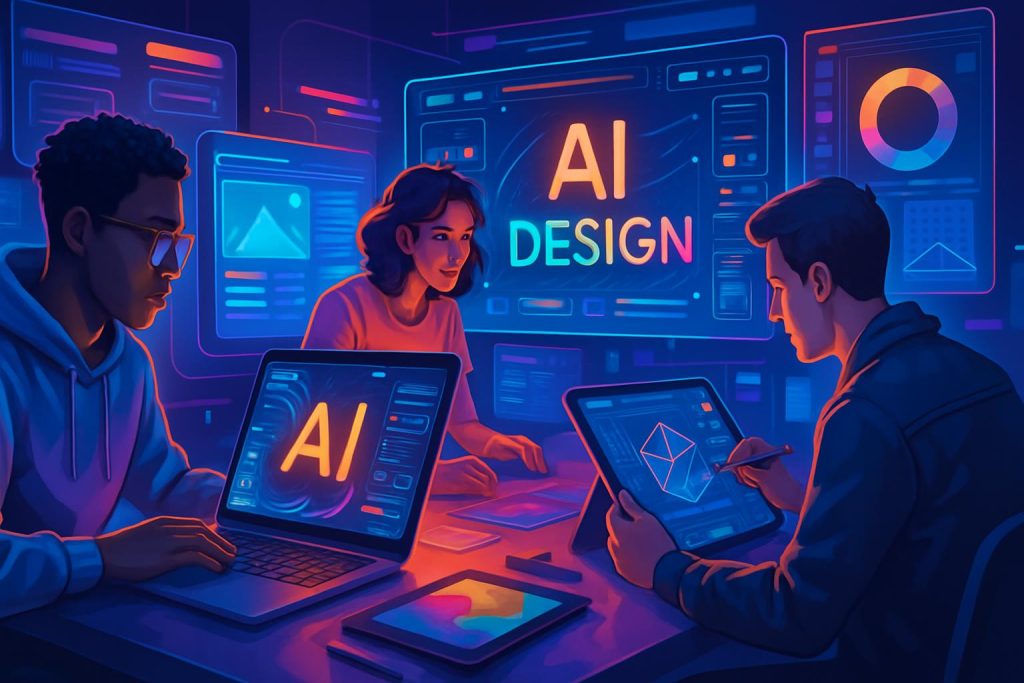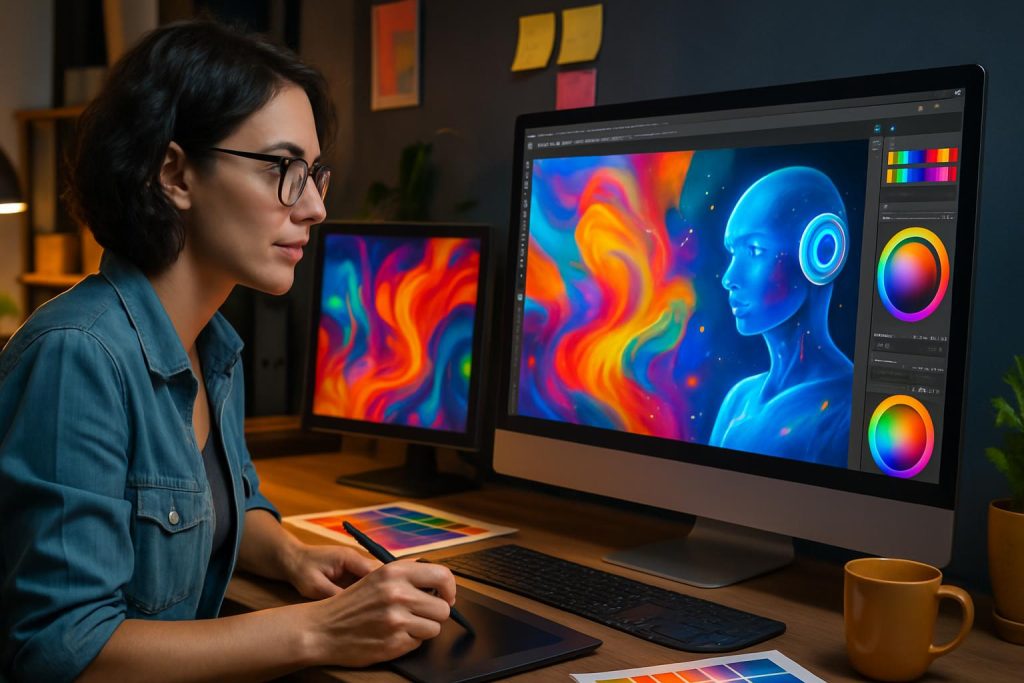In the rapidly evolving digital landscape, user interface (UI) and user experience (UX) design are paramount to the success of any digital product. From mobile applications to complex web platforms, an intuitive, engaging, and seamless user journey is no longer a luxury but a fundamental expectation. However, the process of crafting exceptional UI/UX can be incredibly complex and time-consuming. It involves extensive user research, iterative prototyping, constant testing, and meticulous attention to detail, often leading to prolonged development cycles and significant resource allocation. Designers frequently grapple with the challenge of translating abstract ideas into tangible, user-friendly interfaces, all while ensuring accessibility, responsiveness, and aesthetic appeal. This intricate dance between creativity and technical precision can be a source of both immense satisfaction and considerable frustration.
But what if there was a way to accelerate this intricate process, to gain deeper insights into user behavior, and to rapidly iterate on design concepts with unprecedented efficiency? This is precisely where AI in UI/UX design emerges as a transformative force. AI-powered tools are not here to diminish the role of the human designer; rather, they serve as intelligent accelerators, augmenting a designer’s capabilities and streamlining workflows in ways previously unimaginable. By automating repetitive tasks, generating design variations, and even predicting user preferences, AI frees up UI/UX professionals to focus on higher-level strategic thinking, empathetic design, and the nuanced psychological aspects of user interaction. This shift transforms the design process from a labor-intensive endeavor into a more agile, data-driven, and creatively liberating experience.
This article delves into how artificial intelligence is reshaping the landscape of UI/UX design, offering innovative solutions to common pain points and opening doors to new possibilities for creating truly intuitive and engaging digital experiences. Building on the foundational concepts discussed in revolutionizing creative workflows with AI design tools, we will highlight how AI tools specifically enhance the creation of user interfaces and experiences. You’ll learn about:
- The specific challenges UI/UX designers face that AI can effectively address.
- Key areas where AI tools are making a significant impact in UI/UX design workflows.
- How AI facilitates faster ideation, prototyping, and user testing for improved digital products.
- The benefits of integrating AI into your UI/UX design process for enhanced user satisfaction and business outcomes.
Ready to discover how AI can elevate your UI/UX design practice, making it more efficient, insightful, and user-centric? Let’s explore the transformative power of AI in crafting intuitive user experiences.
The intricate dance of UI/UX: challenges AI can simplify
UI/UX designers navigate a complex ecosystem of user needs, business goals, and technical constraints. The pursuit of seamless interactions and delightful experiences can be incredibly demanding, especially when dealing with:
•Time-consuming research and analysis: Gathering and synthesizing user data, conducting competitive analysis, and identifying pain points can be a lengthy process.
•Iterative prototyping and wireframing: Creating multiple versions of interfaces, from low-fidelity wireframes to high-fidelity prototypes, requires significant manual effort.
•Ensuring consistency and scalability: Maintaining design system consistency across large projects and ensuring designs are scalable for future growth can be challenging.
•Personalization at scale: Delivering tailored user experiences for diverse user segments is often resource-intensive.
•Accessibility compliance: Ensuring designs meet accessibility standards requires careful attention to detail and can be complex to implement manually.
These challenges not only consume valuable time but can also lead to design inconsistencies, suboptimal user experiences, and, ultimately, user frustration. AI offers a compelling solution by automating these pain points, allowing designers to focus on the strategic and empathetic aspects of their craft.
AI solutions for a smarter UI/UX design workflow
AI tools are fundamentally changing how UI/UX designers approach their work, offering intelligent assistance across various stages of the design process. Here’s how AI is making a significant impact:
Automated user research and insights
AI can analyze vast amounts of user data, including user behavior, feedback, and sentiment, to provide actionable insights. This automates much of the initial research phase, allowing designers to quickly identify user pain points, preferences, and patterns. AI-powered analytics can pinpoint areas of friction in a user journey, suggest improvements, and even predict future user behavior, leading to more data-driven design decisions.
Rapid wireframing and prototyping
One of the most significant time-savers in UI/UX design is AI’s ability to generate wireframes and prototypes from simple inputs. Designers can input text descriptions, hand-drawn sketches, or even screenshots, and AI can instantly convert them into editable digital mockups. This accelerates the ideation and iteration process, allowing designers to test more concepts in less time.
Tools such as UX Pilot AI are specifically designed to optimize user flows and accelerate the UX design process. By leveraging AI to analyze user behavior and suggest improvements, UX Pilot AI helps designers create more efficient and intuitive user journeys. To Optimize user flows with UX Pilot AI UX design, explore its capabilities in streamlining your design process and enhancing user satisfaction.
For rapid prototyping and ideation, Uizard’s AI UI capabilities enable designers to quickly transform ideas into interactive prototypes, significantly cutting down development time. Uizard allows you to go from a hand-drawn sketch to a high-fidelity prototype in minutes, making it an invaluable tool for fast-paced design environments. To prototype faster: discover Uizard AI UI capabilities, experience how AI can accelerate your design iterations and bring your concepts to life with unprecedented speed.
Even without a public affiliate program, tools like Visily demonstrate the power of AI in simplifying UI design. Visily allows for the creation of high-fidelity wireframes and prototypes with remarkable ease, converting screenshots, templates, or text prompts into editable designs. While it may not offer an affiliate program, its capabilities highlight the potential of AI to make UI design accessible and efficient for everyone. To design with ease using Visily AI UI tools, explore how this innovative platform can streamline your design process and empower you to create stunning interfaces effortlessly.
Integrating AI into your UI/UX design workflow
Embracing AI in UI/UX design is not about replacing human intuition; it’s about amplifying it. The most effective approach involves integrating AI tools strategically into your existing workflow, allowing them to handle the repetitive and data-intensive tasks while you focus on higher-level strategic thinking, empathetic design, and the nuanced psychological aspects of user interaction. Here’s how to effectively weave AI into your UI/UX design process:
1.Automate Repetitive Tasks: Identify mundane tasks like creating basic wireframes, generating design system components, or performing routine accessibility checks. Delegate these to AI tools to free up your time for more complex problem-solving.
2.Enhance User Research: Use AI-powered analytics to quickly process large datasets of user feedback, behavior, and sentiment. This allows you to gain deeper insights faster and make more informed design decisions.
3.Accelerate Prototyping: Leverage AI to rapidly generate multiple design variations and interactive prototypes from simple inputs. This enables faster iteration and more thorough testing of different design solutions.
4.Personalize User Experiences: Utilize AI to analyze individual user preferences and behaviors, allowing you to create highly personalized and adaptive user interfaces that cater to diverse needs.
5.Maintain Design System Consistency: Employ AI to automatically check for design system compliance, ensuring consistency across all your digital products and reducing manual errors.
6.Focus on Empathy and Strategy: With AI handling the operational burden, you can dedicate more time to understanding user emotions, conducting qualitative research, and developing overarching design strategies that truly resonate with your audience.
By strategically integrating AI, UI/UX designers can transform their workflow, moving from a reactive, task-oriented approach to a more proactive, user-centric one. This allows for greater experimentation, faster delivery, and ultimately, more impactful digital products.
The future of UI/UX design is intelligent and empathetic
The integration of AI into UI/UX design signifies a powerful shift towards a more intelligent, efficient, and empathetic creative ecosystem. AI tools are not merely automation engines; they are intelligent assistants that empower designers to push creative boundaries, gain deeper user insights, and deliver exceptional digital experiences with greater speed and precision. By offloading the mundane and repetitive, AI allows UI/UX designers to dedicate their energy to the strategic, conceptual, and emotionally resonant aspects of their work. This symbiotic relationship between human creativity and artificial intelligence is paving the way for a future where digital products are more intuitive, more engaging, and more tailored to individual user needs than ever before. The true power lies in harnessing AI to amplify human ingenuity, ensuring that the art of UI/UX design continues to evolve and inspire.



